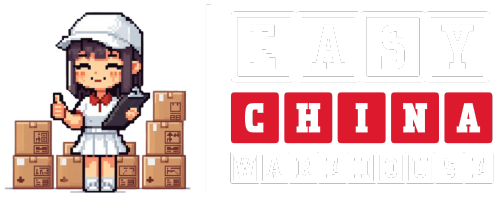Login
How to Conduct a Commodity Inspection: A Complete Guide for Importers & E-Commerce Sellers

Shipping goods from China to international markets like the US, Europe, or other regions requires ensuring product quality and compliance with regulations. Commodity inspection is a crucial step in the supply chain that helps cross-border e-commerce sellers (Amazon, Walmart, Shopify), manufacturers, and retailers avoid costly rejections, delays, or legal issues.
In this guide, we’ll cover:
✅ What is commodity inspection?
✅ Why is inspection necessary for cross-border trade?
✅ Types of commodity inspections
✅ Step-by-step process for conducting inspections
✅ How to choose a reliable inspection company in China
By the end, you’ll understand how to ensure product quality, meet international standards, and streamline customs clearance for smoother logistics.
What is Commodity Inspection?
Commodity inspection is a systematic check of goods to verify their quality, quantity, safety, and compliance before shipment. It helps importers, e-commerce sellers, and manufacturers avoid defective products, customs rejections, or customer complaints.
Inspections are typically conducted by:
- Third-party inspection companies (e.g., SGS, BV, Intertek)
- In-house quality control teams
- Customs authorities
Why is Commodity Inspection Important?
- Avoid Defective Shipments – Ensures products meet specifications before leaving the factory.
- Compliance with Regulations – Meets FDA, CE, RoHS, REACH, and other international standards.
- Prevent Customs Delays – Proper documentation reduces clearance issues.
- Protect Brand Reputation – Reduces returns & negative reviews on Amazon, Walmart, Shopify.
- Cost Savings – Detects issues early, avoiding expensive recalls or reshipments.
Types of Commodity Inspections
Depending on your needs, different inspections may apply:
1. Pre-Production Inspection (PPI)
✅ Checks raw materials & production readiness before manufacturing begins.
2. During Production Inspection (DPI)
✅ Monitors quality at the 20%-80% production stage to catch issues early.
3. Pre-Shipment Inspection (PSI)
✅ Final check (100% production complete) to ensure goods match the order before shipping.
4. Container Loading Inspection (CLI)
✅ Verifies correct packing, labeling, and loading to prevent damage in transit.
5. Sample Testing & Lab Analysis
✅ Tests product safety (e.g., lead content, flammability, chemical compliance).
How to Conduct a Commodity Inspection: Step-by-Step
Step 1: Define Inspection Criteria
- Agree with the supplier on AQL (Acceptable Quality Limit) standards.
- Specify product specifications, packaging, labeling, and compliance requirements.
Step 2: Hire a Professional Inspection Company
Choose a reliable third-party inspection service in China (e.g., SGS, Bureau Veritas, TÜV, or local agencies).
Step 3: Schedule the Inspection
- For PSI, inspect when 100% of goods are ready.
- For DPI, check during mid-production.
Step 4: On-Site Inspection Process
Inspectors will:
✔ Check quantity, dimensions, weight
✔ Test functionality & durability
✔ Verify packaging & labeling (barcodes, shipping marks)
✔ Take photos & videos as evidence
Step 5: Receive Inspection Report
A detailed report will highlight:
- Pass/Fail status
- Defects found
- Recommendations for improvements
Step 6: Approve or Reject Shipment
- If passed → Proceed with shipping.
- If failed → Negotiate with the supplier for repairs/replacements.
How to Choose the Right Inspection Company in China
When selecting an inspection service, consider:
🔹 Experience in your industry (electronics, textiles, toys, etc.)
🔹 Global accreditation (ISO 17020, CPSC, etc.)
🔹 Fast turnaround & transparent pricing
🔹 Multilingual support (for easier communication)
At Easy China Warehouse, we partner with trusted inspection providers to help Amazon FBA sellers, Walmart suppliers, and Shopify merchants ensure smooth shipments from China.
Final Thoughts
Commodity inspection is a must for cross-border e-commerce sellers, manufacturers, and retailers importing from China. By following proper inspection procedures, you reduce risks, improve product quality, and enhance customer satisfaction.
Need help with quality control, warehousing, or shipping from China? Want more logistics tips? Check out our blog
